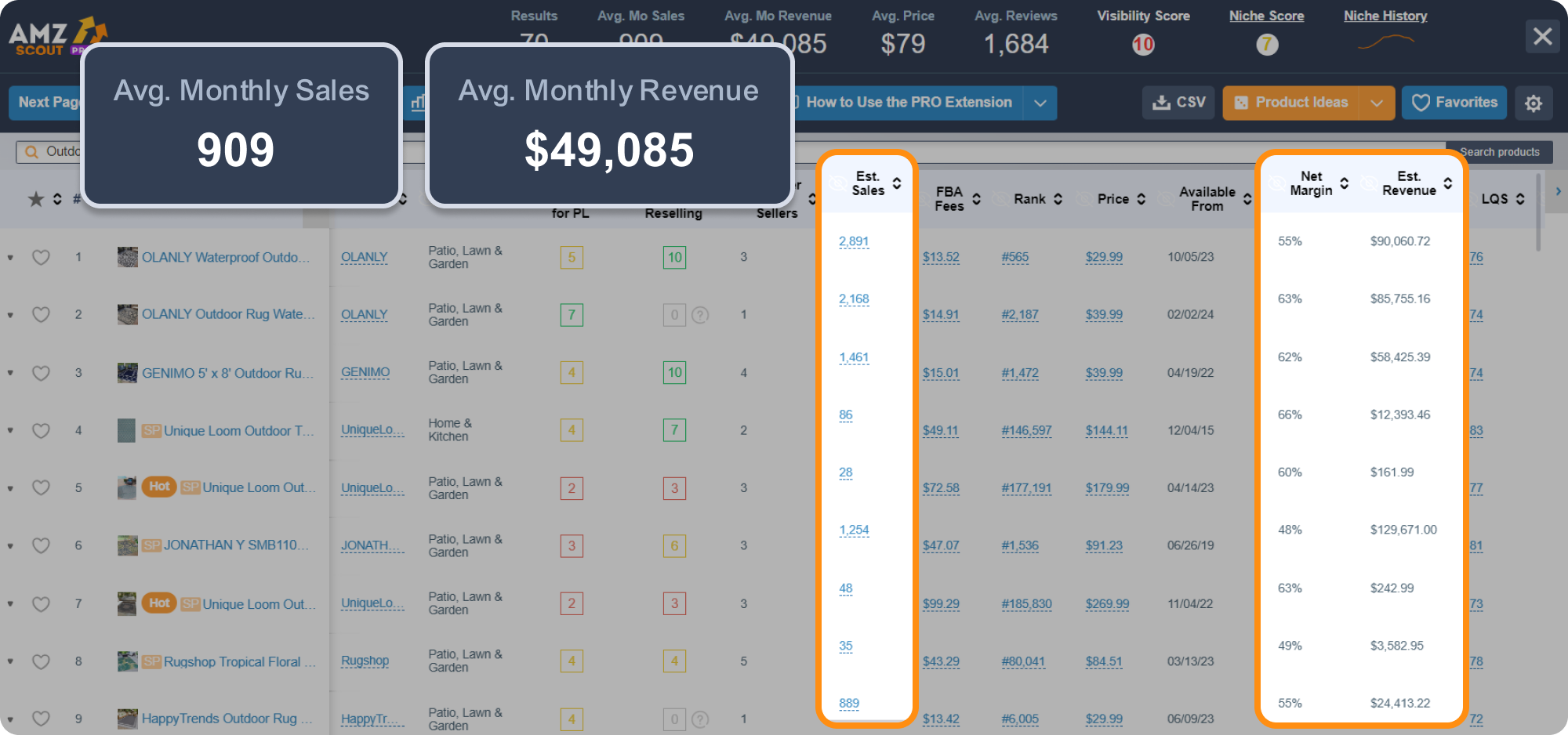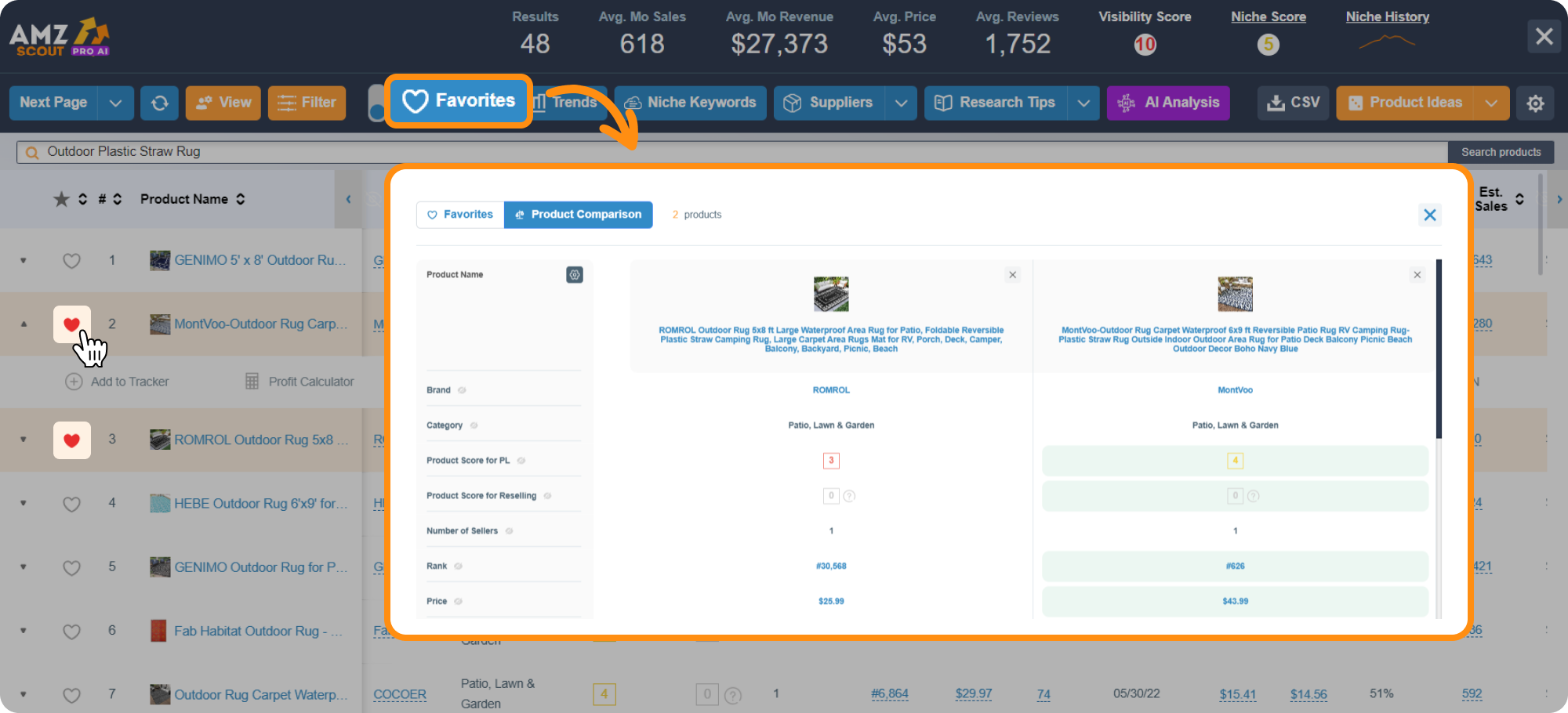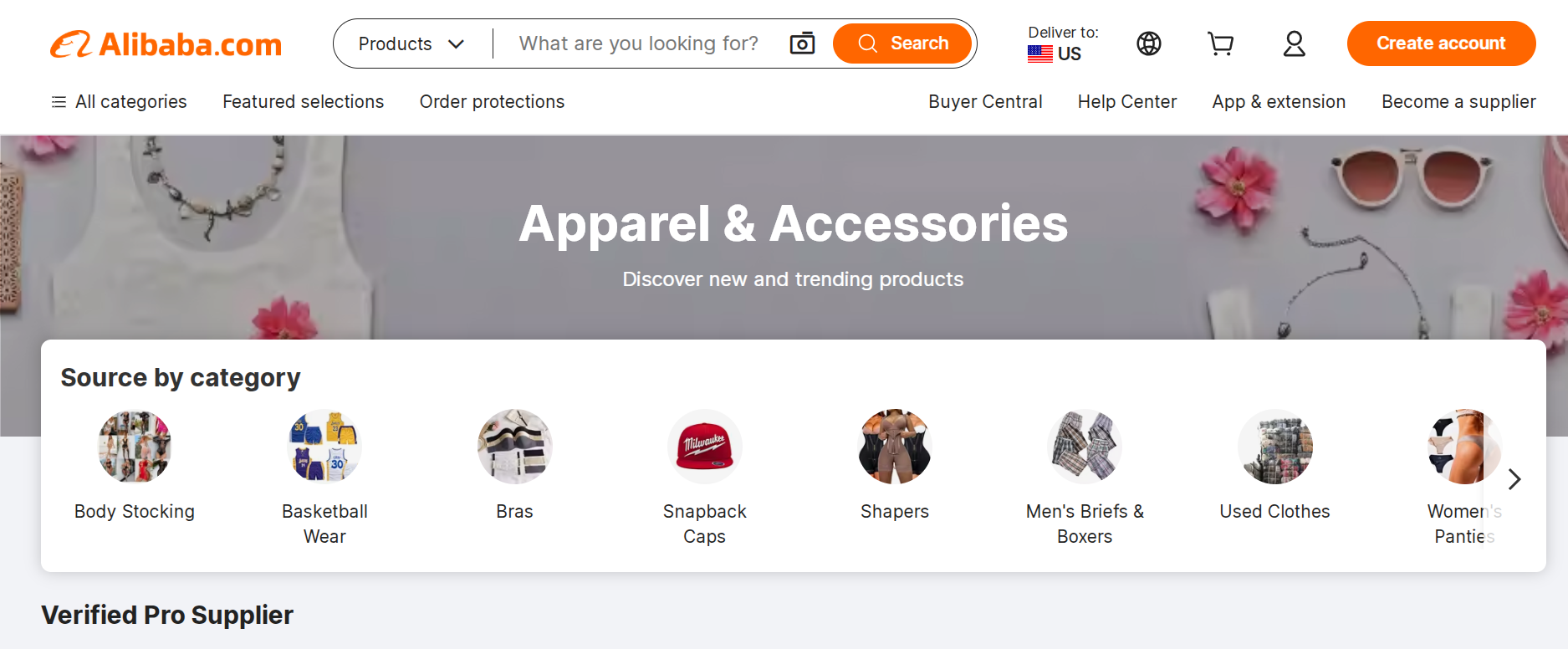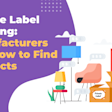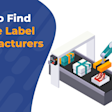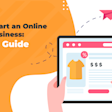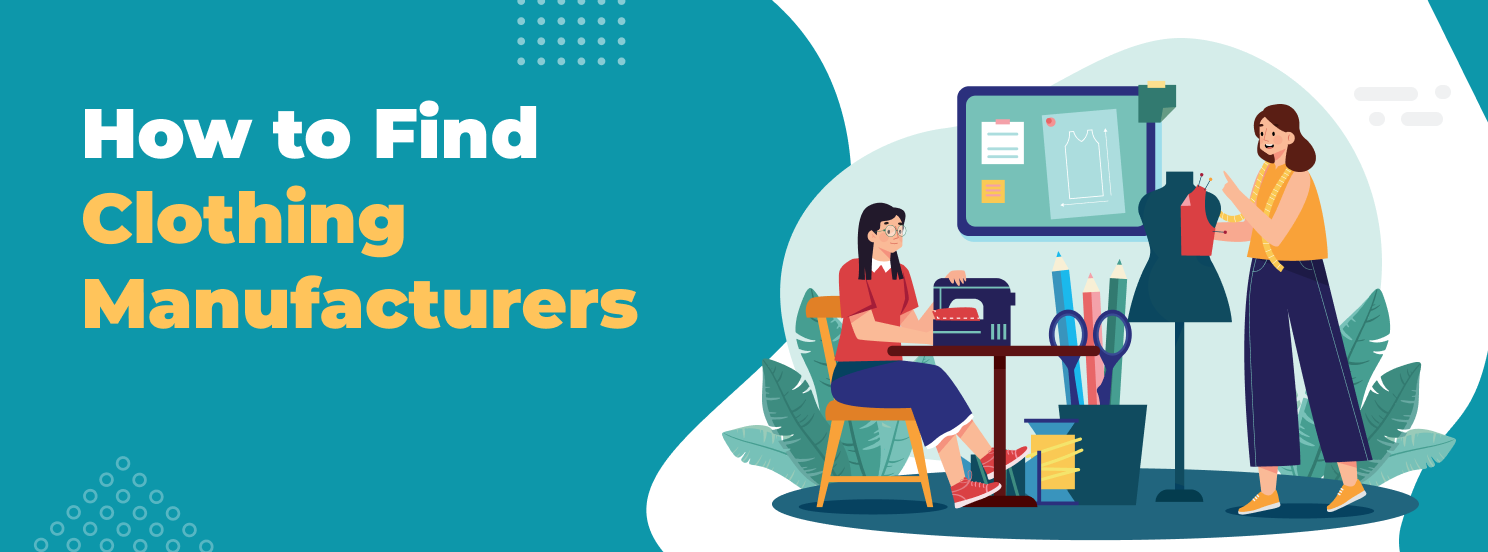
The Ultimate Guide to Finding a Clothing Manufacturer for Your Brand
If you're ready to turn your fashion vision into reality and sell your pieces on Amazon, it all starts with one game-changing move: finding the right clothing manufacturer. Whether you're building a bold new apparel brand, designing custom merchandise for your small business, or scaling a stylish clothing line, the quality of your products depends on your clothing maker behind the scenes.
In this step-by-step guide, we’ll show you exactly how to find a clothing manufacturer that fits your goals, from prepping your designs to choosing the best factory or supplier based in the U.S. or overseas. Are you ready to create something that sells? Let’s stitch your dream into something real.
Table of contents
Before You Start Searching
Before you dive headfirst into contacting clothing factories and suppliers, it’s important to lay the groundwork. The best clothing manufacturers (whether they’re American or overseas, small-batch or full-scale) will need you to provide some specifics. So, to save time and make smarter decisions, take a moment to define what you really need.
1. Assess Your Needs
Think of this as your fashion business blueprint. Start by defining your target market: Are you designing bold streetwear for Gen Z trendsetters? High-performance activewear for fitness fans? Or maybe timeless staples for everyday wear? Knowing your audience will guide every aspect of your business, from your product design to packaging.
Next, consider your product type, budget, and estimated order volume. Custom clothing manufacturers usually have minimum order requirements, so you’ll want to be realistic. Not sure what kind of clothing line to launch?
Tools like the AMZScout Product Database can help. This isn’t just any product research tool - it’s your backstage pass to the world of Amazon retail. With a massive database that includes over 600 million Amazon products, AMZScout gives you instant access to the kind of data most sellers would spend weeks trying to gather. You can explore top-selling clothing items across every imaginable niche, filter results by price, sales rank, reviews, and competition level, and zero in on opportunities others might miss entirely.
Whether you're brainstorming ideas or narrowing down your concept, the Product Database can help you discover profitable clothing line opportunities backed by real market data. This is an ideal starting point for uncovering in-demand product ideas, so you can focus your efforts on what people actually want to buy.
2. Validate Your Product Idea
Don’t fall in love with a product idea before confirming there’s demand. A stylish design means nothing if it won’t sell. Use data to your advantage provided by the AMZScout PRO AI Extension.
While this tool is a favorite among Amazon sellers, it’s also incredibly useful for anyone researching the market. Why? Because Amazon is the world’s largest online marketplace, and its sales trends are a powerful indicator of what consumers actually want. With the PRO AI Extension, you can analyze demand, competition, pricing trends, and profit potential, directly from Amazon’s listings.
This is a smart, efficient way to validate your product ideas and make sure you’re building something that aligns with current market needs.
Here’s how to use it:
1. Install the AMZScout PRO AI Extension. Start a free trial with just your email address - no credit card needed.
2. Open the Extension. Click the AMZScout icon in your browser.
3. Search for a product idea on Amazon. Type the name of any item you're thinking of selling.
4. Sort the results. Click on the Estimated Sales column to see which items are performing best.
5. Check the bestseller's product history. Look at historical sales to see if demand is consistent or just a passing trend.
6. Analyze with AI. Click AI Product Analysis for in-depth insights into whether the product suits your goals.
7. Compare and choose. Use the Favorites and Product Comparison tools to weigh multiple options and pick the best one for your brand.
Validating your product idea ensures that you’re investing in something with real sales potential, which is critical when you're working with clothing vendors and factories that require upfront costs.
3. Decide on Your Preferred Manufacturer Type
Now that you’ve narrowed down your product and confirmed demand, it’s time to choose the right type of clothing manufacturer. Here’s a quick breakdown:
CMT (Cut, Make, Trim): This option is ideal if you have your own patterns and materials—they simply assemble your design.
FPP (Full Package Production): Best for startups who want everything from design to delivery handled in one place.
OEM (Original Equipment Manufacturer): You customize existing products from their catalog with your brand.
ODM (Original Design Manufacturer): They provide the designs, and you brand them as your own—fast and easy, but less unique.
Each option has its own pros and cons, depending on your budget, timeline, and level of creative control. For most new Amazon fashion sellers, FPP and OEM are the most practical starting points.
How to Find Manufacturers for Clothing
With your concept polished, your desired audience locked in, and your product idea backed by real data, you’re no longer just dreaming—you’re building. Now comes the exciting part: finding the perfect clothing factory or supplier to bring it all to life. Forget trial and error. Follow these steps to find clothing manufacturers without the guesswork, dead ends, or endless Googling.
1. Online Platforms and Directories
The internet is a goldmine for finding vetted clothing factories, especially if you know where to look. These platforms give you access to thousands of clothing manufacturers, from high-quality fashion suppliers to affordable, startup-friendly options.
Alibaba – One of the largest global B2B marketplaces. Use filters to find verified clothing manufacturers with low MOQs (minimum order quantities), and contact them directly. This option is great for getting products made at scale and on a budget.
Maker’s Row – A favorite for small businesses and fashion startups in the U.S. It connects you with American clothing factories offering everything from prototyping to full-package production -ideal for those who want to manufacture locally and maintain better control.
ThomasNet – A powerful directory of U.S.-based suppliers, including apparel manufacturers. Great if you're seeking clothing factories in the U.S. with certifications and reliable production timelines.
Indie Source – A Los Angeles–based clothing manufacturer that specializes in helping fashion brands go from an idea to the finished product. It's especially helpful for those looking for custom clothing and full-service support.
Pro Tip: When browsing online directories, always ask for product samples, review their previous work, and check response times. This will tell you a lot about their professionalism and quality control.
2. Trade Shows & Industry Events
Want to shake hands with real people behind the scenes at the factories? Trade shows are one of the fastest ways to discover clothing suppliers you can trust. They give you the chance to see materials up close, ask direct questions, and even start building relationships face-to-face.
One of the biggest fashion manufacturing trade shows in the U.S. is MAGIC Las Vegas, a massive event where clothing vendors, fabric suppliers, and fashion startups from around the world come together. Other noteworthy shows include:
Texworld USA – Focuses on textiles and sourcing, and especially useful if you're planning to build your product from the fabric up.
Sourcing at MAGIC – A spin-off event focused solely on finding apparel manufacturers and factories.
The LA Textile Show – Great for West Coast brands looking for local manufacturers or boutique-level suppliers.
Attending these events can spark game-changing collaborations, especially if you're launching a small clothing line or growing a niche fashion brand with high quality in mind.
3. Networking and Recommendations
Don’t underestimate the power of a good recommendation. If you're a member of any online communities for Amazon sellers, fashion entrepreneurs, or apparel startups, tap into these resources. Ask fellow sellers where they manufacture their merchandise, what their lead times are like, and whether the quality matches the pitch.
Check out:
Reddit threads (like r/AmazonFBA or r/fashiondesign)
Facebook groups for clothing brands or private-label sellers
Local business meetups or small business development centers
Real experiences from others can help you avoid the duds and go straight to reliable clothing makers in the USA who actually deliver high quality results.
4. Local Manufacturers
There’s a lot to love about working with local clothing manufacturers, especially if you want faster turnaround times, easier communication, and more control over quality.
Choosing a manufacturer in the USA can simplify logistics and eliminate language or time zone barriers. It’s also easier to visit them in person, do quality checks, and scale production in real time. Whether you're producing sustainable streetwear or high-end activewear, American clothing factories often have flexible MOQs and cater to small businesses.
Check regional directories or reach out to nearby fashion schools and incubators. They often have connections to local factories, CMT manufacturers, or freelancers who can help you get started.
Choosing the Right Manufacturer
Now that you’ve compiled a shortlist of promising clothing manufacturers, it’s time to dig deeper. Not every manufacturer for clothing is created equally; some are built for bulk orders, while others specialize in boutique fashion brands or custom clothing lines. To avoid costly surprises down the road, here’s how to evaluate each potential supplier like a pro.
1. Ask the Right Questions
Treat your first conversation like a job interview. They’re applying to be your partner, not the other way around. Ask about their production capacity to ensure they can scale with your business as it grows. Get clarity on their MOQ (minimum order quantity), especially if you're a small business or testing a new product.
Understand their pricing structure upfront: Are there any hidden fees for pattern-making or sample revisions? Don’t forget to ask about lead times—how long production takes from start to finish—and what kinds of quality control processes they have in place. A good manufacturer will answer these questions confidently and transparently.
2. Review Certifications, References, and Past Clients
A legitimate clothing manufacturer for startups or fashion companies should have verifiable credentials. Ask to see any industry certifications (like ISO, WRAP, or GOTS for organic textiles), which show they meet certain standards.
You should also request references or a list of past clients, especially if you’re considering high-quality clothing manufacturers or American clothing vendors. If they’ve worked with well-known brands or have solid reviews, that’s a major green flag. Bonus: check their social media or website portfolio to see real products they've produced.
3. Request Samples
You should never place a bulk order without seeing their work firsthand. An item sample lets you evaluate fabric quality, stitching, fit, labeling, and finishing details. If you’re working with custom clothing manufacturers, pay special attention to how well they follow your design specs.
Some may offer a paid sample or a refundable sample fee once you move forward. This is your chance to compare vendors side-by-side and avoid the nightmare of receiving hundreds of poor-quality pieces you can’t sell.
4. Negotiate Terms
Once you find a manufacturer that checks all the boxes, it’s time to talk business. You need to negotiate pricing that supports both your margins and long-term growth - don’t just go with the cheapest quote. Discuss your payment structure: for example, will you pay 50% upfront and 50% upon delivery?
Get clear agreements on delivery timelines, so you're not left waiting during key sales periods. Most importantly, you should include a quality assurance clause to protect your brand if something goes wrong. A trustworthy clothing supplier will be open to fair, written terms. And if they’re not, it’s a sign to walk away.
Top 12 Clothing Manufacturers by Country
Below, you can explore a sample list of international suppliers offering private label and wholesale apparel manufacturing services. These companies cater to diverse niches, from activewear to swimwear, providing quality production solutions worldwide.
United States
Alanic Global
alanicglobal.com/private-label/
Specialty: Diverse Clothing Categories
Alanic Global is a leading U.S.-based manufacturer offering a wide range of apparel, including activewear, fashion, and lifestyle clothing. They provide custom private label services with low minimum order quantities, catering to both startups and established brands.
Seam Apparel
seamapparel.com/private-labeling
Specialty: Sports Apparel
Seam Apparel specializes in private label sportswear manufacturing, offering high-quality activewear for various sports. They focus on performance fabrics and design innovation to meet the needs of athletic brands.
Canada
Good For Sunday
goodforsunday.com/pages/wholesale-private-label
Specialty: Apparel
Good For Sunday is a Canadian brand known for its ethically made clothing, including t-shirts, sweatshirts, and loungewear. They offer private label services with a focus on sustainability and quality manufacturing within Canada.
Mexico
Vertical Knits
Specialty: Knitted Apparel
Vertical Knits is a vertically integrated manufacturer in Mexico, specializing in knitted apparel. They offer full-package services from fabric production to finished garments, emphasizing sustainability and efficiency in their operations.
Grupo Denim
Specialty: Denim
Grupo Denim is a prominent denim manufacturer in Mexico, known for its high-quality denim fabrics and garments. They cater to both local and international brands, providing customized denim solutions.
Brazil
Brazilian Private Label
Specialty: Bikinis
Brazilian Private Label specializes in swimwear manufacturing, offering a range of bikini styles. They provide low minimum order quantities and transparent pricing, with a focus on quality and timely delivery.
United Kingdom
White2Label Manufacturing
Specialty: Clothing
White2Label Manufacturing offers private label clothing production services in the UK. They provide a range of apparel manufacturing solutions, focusing on quality craftsmanship and efficient production processes.
Serbia
Fush
Specialty: Clothing
Fush is a Serbian clothing manufacturer known for its high-quality garment production. They offer private label services with a focus on craftsmanship and attention to detail.
Australia
OCC Apparel
Specialty: Apparel
OCC Apparel is an Australian manufacturer offering custom clothing production services. They cater to various apparel needs, providing quality manufacturing solutions for brands.
China
Lezhou Garment
Specialty: Clothing
Lezhou Garment is a Chinese clothing manufacturer offering a range of apparel production services. They provide private label solutions with a focus on quality and cost-effectiveness.
India
Loyal Textiles
Specialty: Clothing
Loyal Textiles is one of India's largest textile manufacturers, offering a wide range of clothing production services. They provide private label solutions with a focus on sustainable practices and quality manufacturing.
Singapore
The Fleur Label
Specialty: Apparel
The Fleur Label is a Singapore-based apparel manufacturer offering private label services. They specialize in creating stylish and high-quality garments tailored to their clients' specifications.
These suppliers offer a range of services to help you bring your clothing brand to life, from concept to production. Whether you're looking for sustainable practices, specific garment types, or particular manufacturing capabilities, these companies provide diverse options to suit various needs.
Final Thoughts
Finding the perfect clothing manufacturer might feel overwhelming at first, but with the right prep, smart tools, and a clear vision, this step becomes a launchpad, not a roadblock. Whether you’re creating a bold new fashion brand, building custom merchandise, or scaling your Amazon clothing line, your choice of manufacturer sets the tone for everything that follows.
Use platforms like AMZScout to help you research, validate, and fine-tune your product ideas with confidence, so when you’re ready to hit "go”, you know you’re building something worth wearing and selling.
FAQs
How to work with a clothing manufacturer?
Working with a clothing manufacturer starts with clear communication. Share detailed designs, material preferences, and order quantities upfront. Request samples to check quality, agree on pricing and timelines, and sign a contract to protect both sides. Regular updates and feedback help ensure production aligns with your brand standards, building a smooth, long-term partnership.
How to choose a clothing manufacturer
Choosing a clothing manufacturer involves evaluating experience, quality, and reliability. Check their production capabilities, minimum order requirements, and past client reviews. Consider location, pricing, and ethical practices. Request samples to inspect workmanship and materials. A good manufacturer communicates clearly, meets deadlines, and aligns with your brand vision, ensuring consistent, high-quality products for your clothing line.
How to start a clothing business on Amazon?
Starting a clothing business on Amazon begins with market research and identifying a niche. Source reliable manufacturers for private label or custom products. Create a professional seller account, optimize product listings with compelling titles, images, and descriptions, and manage inventory efficiently. Leverage Amazon’s advertising tools, reviews, and promotions to build visibility, attract customers, and grow your brand successfully.


